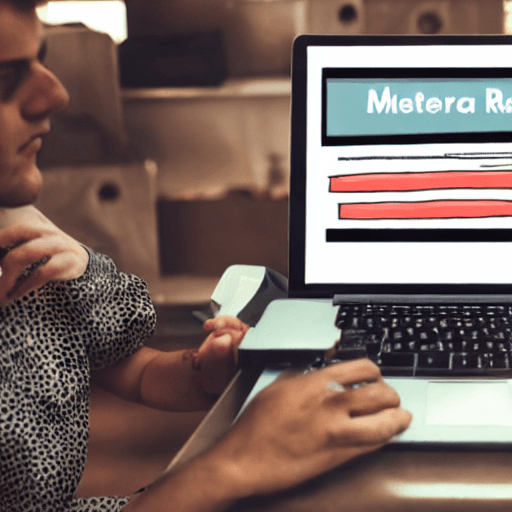

In the dynamic world of digital advertising, a captivating meta ad copy is the cornerstone of a successful campaign. It’s the first – and often only – interaction a potential customer has with your brand before they decide to learn more. Poor meta ad copy can lead to missed opportunities, while expertly crafted copy can dramatically increase your click-through rate (CTR) and, ultimately, your return on investment (ROI). This comprehensive guide delves into the art and science of writing meta ad copy, providing you with the knowledge and strategies to create ads that grab attention, pique interest, and drive conversions. We’ll explore the key elements, best practices, and real-world examples to help you transform your advertising efforts.
Meta ad copy refers to the text that appears alongside your ad in platforms like Google Ads and Facebook Ads. It’s comprised of several components, each playing a crucial role in attracting clicks. These components typically include the headline, the description, and the call to action (CTA). The specific character limits for each component vary depending on the platform, so understanding these limitations is paramount. For example, Google Ads headlines have a maximum of 30 characters, while descriptions have a limit of 90 characters. Facebook Ads offers more flexibility but still requires strategic use of space.
The headline is arguably the most important element of your meta ad copy. It’s the first thing users see, and it needs to immediately grab their attention. A weak headline can instantly kill your ad’s performance. Think of it as a mini-advertisement within your ad. Effective headlines are concise, benefit-driven, and often pose a question or make a bold statement. Avoid generic phrases like “Shop Now” or “Best Deals.” Instead, focus on what your product or service offers and why it’s valuable to the user.
Example: Instead of “Discount Electronics,” a better headline could be “Upgrade Your Tech – Save 20%”
The description provides further context and details about your offer. It builds upon the headline, elaborating on the benefits and addressing potential user concerns. It’s your opportunity to showcase the unique value proposition of your product or service. Use the description to answer questions like “What problem does this solve?” or “Why should I choose this over the competition?” Keep it concise and focused on the most compelling aspects of your offer. Don’t simply repeat the headline; provide additional information that encourages users to click.
Example: Headline: “New Running Shoes” Description: “Experience superior comfort and support. Perfect for marathon training or everyday runs.”
The call to action is a direct instruction that tells users what you want them to do. It’s the final push needed to convert a potential customer into a click. CTAs should be clear, concise, and action-oriented. Common examples include “Shop Now,” “Learn More,” “Get a Quote,” or “Sign Up Today.” Experiment with different CTAs to see which ones perform best. A weak or missing CTA can significantly reduce your CTR.
Example: “Download Your Free Ebook Now!”
Several key principles guide the creation of high-performing meta ad copy. Mastering these principles will dramatically improve your CTR and overall advertising effectiveness.
While the core principles of effective meta ad copy apply across all platforms, there are specific considerations for Google Ads and Facebook Ads.
Google Ads: Google Ads relies heavily on keyword targeting. Your meta ad copy should incorporate relevant keywords to improve your ad’s visibility in search results. Google Ads also offers features like responsive search ads, which automatically generate different ad variations based on user queries.
Facebook Ads: Facebook Ads are primarily driven by audience targeting. Your meta ad copy should align with the interests and demographics of your target audience. Facebook Ads also allows for the use of dynamic product ads, which automatically display products that users have previously viewed on your website.
Mastering meta ad copy is a critical skill for any advertiser. By understanding the key principles, platform-specific considerations, and following a systematic approach, you can significantly improve your CTR and achieve your advertising goals. Remember that meta ad copy is not just about writing words; it’s about crafting a compelling message that resonates with your target audience and motivates them to take action. Continuous testing and optimization are essential for long-term success. Don’t be afraid to experiment and iterate until you find what works best for your business.
This comprehensive guide provides a solid foundation for creating effective meta ad copy. By applying these principles and continuously refining your approach, you’ll be well on your way to achieving your advertising objectives.
Tags: meta ad copy, click-through rate, advertising, marketing, headlines, descriptions, calls to action, PPC, Google Ads, Facebook Ads
[…] Higher Conversion Rates: A copy that accurately reflects your offer and speaks directly to your audience’s needs is far more likely to convert clicks into sales, leads, or desired actions. […]
[…] versions of your ad, each with a slightly different emotional focus. Track key metrics such as click-through rate (CTR), conversion rate, and cost-per-acquisition […]
[…] Mastering Meta ad rules within Meta Ad Manager is no longer a luxury – it’s a necessity for any business serious about scaling its advertising efforts. By automating your campaigns with intelligent rules, you can significantly improve your efficiency, optimize your spending, and drive better results. Remember to start small, monitor your performance, and continuously test and iterate to find what works best for your business. With a strategic approach to rule implementation, you can unlock the full potential of Meta’s advertising platform and achieve your marketing goals. […]
[…] element often overlooked is the strategic use of ad scheduling. This guide delves deep into mastering meta ad scheduling, providing you with the knowledge and techniques to optimize your campaigns for peak […]
[…] information to determine the relevance of your page to a user’s search query. A poorly written meta description can lead to low click-through rates, while a well-crafted one can dramatically increase them. Think of it as a persuasive argument, […]